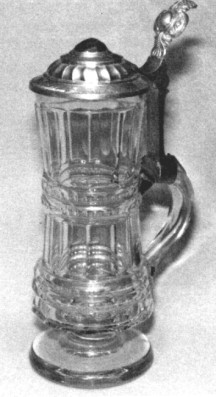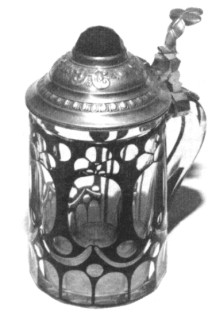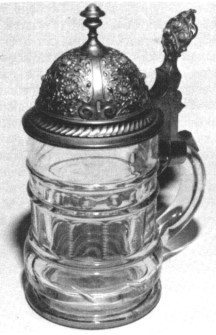Myths and Superstitions
by Jim Sauer
(originally published in Prosit, June 1988)

|
Stein Collectors International, Inc. |
|
Myths and Superstitions by Jim Sauer (originally published in Prosit, June 1988) |
 |
 |
| Figure 1: Late nineteenth century steins with "jeweled" lids were symbolic of early European superstitions that precious gems provided protection and good fortune. The amethyst was alleged to have the power to subdue the passions and repress drunkenness. |
 |
| Figure 2: The red ruby was regarded as a valuable and cherished jewel, and it was thought to have magical powers that restrained lust, drove off wicked spirits, and warned of the presence of poisons. |
 |
| Figure 3: Decorating the lid and thumblift of this stein, the blue turquoise, when bestowed as a gift, was a token of love to a betrothed. The gem was reputed to change color if that love and affection were lost. |
|
All rights reserved. |